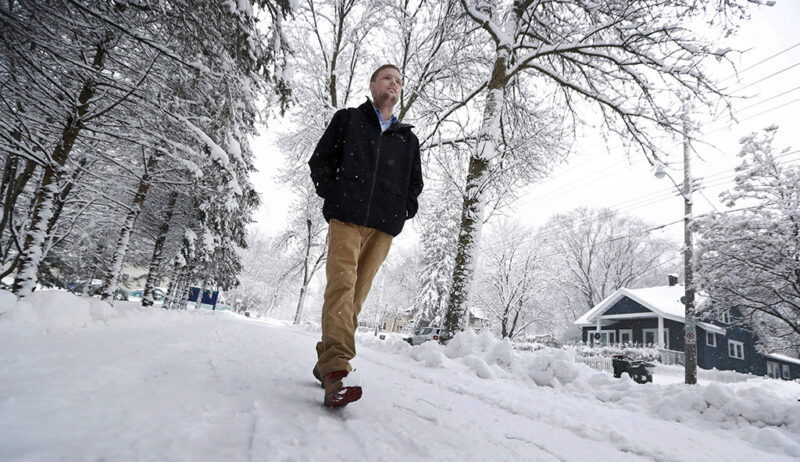A face transplant: It’s one of the rarest of surgeries, a medically complex, emotionally fraught procedure – and a challenge to cover as a truly revealing news story and not just a sensational headline.
That’s why AP National Writer Sharon Cohen’s narrative of the first face transplant performed at the renowned Mayo Clinic was so remarkable, combining detailed reporting on state-of-the-art medical science with a unique tragedy-to-triumph human story. The narrative, Andy’s New Face, which engaged readers and commanded front pages for days after its release, earns the Beat of the Week.
Cohen arranged exclusive access to the medical team and its images surrounding the transplant, taking readers into the operating and recovery rooms, and deep into the lives of recipient and donor and their families.
At the center of the all-formats story is Andy Sandness, who tried to commit suicide at age 21; he shot himself but survived with disfiguring facial injuries. He immediately regretted his action and, with support from family and friends, worked for years to try to get his life back to normal. Ironically, it was the tragedy of another young man's suicide, along with the skills and determination of surgeons, that allowed Sandness to receive a face transplant and a true second chance at life.
Cohen, who arranged exclusive access to the Mayo Clinic medical team and its photos and video surrounding the transplant, takes readers into the operating and recovery rooms, deep into the lives of recipient and donor and their families, and to the scene today, when Sandness can smile as he goes out in public and becomes, as he says, "just another face in the crowd."
Readers hear the young widow of the donor confide that she worried about encountering her late husband's face on the street; they hear the anguish of Sandness as he begs not to die after shooting himself. But along with the human drama, Cohen shows in riveting detail the science that makes the transformative operation possible. She writes at one point:
"One of the most intricate parts of the surgery was identifying facial nerve branches on both men and stimulating them with an electric current to determine their function. That allowed doctors to make the correct transfers, so when Sandness thinks about smiling or closing his eyes, for example, those movements actually happen."
The text story was illustrated by stunning photos by Charlie Neibergall and a powerful video by Teresa Crawford and Jeannie Ohm, and accompanied by a contextual sidebar on face transplantation by Chief Medical Writer Marilynn Marchione. Trenton Daniel in New York put together a stack treatment on AP News, combining all the elements:
The package became a trending item online as soon as it was released on Friday and remained popular through the PresidentsDay holiday, also showing up on newspaper front pages through the weekend. It ranked No. 3 for the week on AP Mobile. Online reader engagement, as shown by the metrics measure Chartbeat, was at sustained levels not seen before by the Nerve Center. As one reader commented: "I read stories on my news app and most times don't get past the first few paragraphs. I had to read this story in its entirety."
The CEO of Mayo Clinic wrote, “Thank you for your commitment to high-quality, impactful journalism.”
Other comments called the package "inspirational" and "informative," one saying, "I learned so much about the process without feeling beaten down." Among many health website retweets of the story was this from the editor of STAT, a respected medical news service: "This story from @AP - on a young man who shot his face off, then got a face transplant - is incredible."
In a note to AP President Gary Pruitt, the CEO of Mayo Clinic wrote, “Thank you for your commitment to high-quality, impactful journalism.”
For delivering just that, Cohen wins this week’s $500 prize.

Face transplant recipient Andy Sandness walks to the Saint Marys Hospital campus at Mayo Clinic in Rochester, Minn., Jan. 25, 2017. Sandness can pinpoint the day he looked normal. About three months after the procedure, he was in an elevator with a little boy who glanced at him, then turned to his mother without appearing scared or saying anything. "I knew then," he says, "that the surgery was a success."
AP PHOTO / CHARLIE NEIBERGALL








